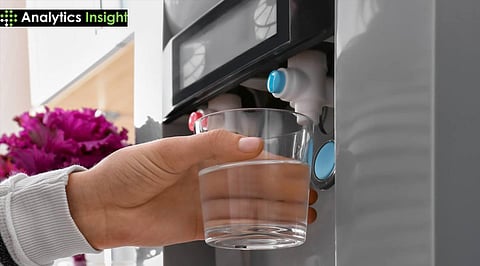

RO purifiers are ideal for hard or borewell water, while UV purifiers work best with municipal soft water.
RO systems remove dissolved salts and metals; UV purifiers kill germs but retain water’s natural taste.
Top 2025 models combine RO and UV technologies, offering smarter, safer, and more efficient purification.
Clean water is vital for maintaining good health, and in India, many people rely on water purifiers to ensure their drinking water is safe. RO and UV purifiers are two popular options, each with distinct features and benefits. While they differ in performance, both types can effectively purify water.
This article will delve into the specifics of RO and UV technology, comparing their performance and highlighting the best models to consider for purchase in 2025. By understanding the strengths of each type, you can make an informed decision for your water purification needs.
RO stands for Reverse Osmosis. These purifiers use a semi-permeable membrane to filter out harmful contaminants such as dissolved salts, heavy metals, and microorganisms. RO purifiers are most effective in regions with a high hard or salty water supply.
Key Features:
Removes TDS (Total Dissolved Solids)
Eliminates arsenic, fluoride, and lead
Has pre-filters and post-filters
Storage tank included
As per the Bureau of Indian Standards (BIS), TDS levels less than 500 mg/litre are considered safe. RO systems can easily bring down the TDS level from 2000 to within the safe range.
Also Read: Smart Water Bottles: Do they improve hydration habits?
UV stands for Ultraviolet. These purifiers use UV light to neutralize germs and bacteria. UV doesn’t remove salts or metals. UV systems perform best in cities where municipalities supply soft water.
Key Features:
No storage tank
Uses UV radiation to disinfect water
Compact and easy maintenance
Retains the original taste of water.
UV purifiers kill 99.99% of germs but do not remove chemical particles.
As per Statista’s 2024 survey, 57% of Indian homes with purifiers use RO, while 23% are dependent on UV systems.
Below are the lists of the Best Water Purifiers in India for this year:
8-litre capacity
Great for high TDS levels
Estimated for Rs.17,000
No RO included
Modern look
Estimated for Rs.11,500
Minimal water waste
10-litre storage
Estimated for Rs.14,000
Dual-layered filtration
Space saving
Estimated for Rs.10,500
Combination of RO, UV, and Mineralizer
Ideal for families
Estimated for Rs.9,999
Features include both Hot and Cold water
Premium look
Estimated for Rs.22,000
Durable
Reasonable
Estimated for Rs.13,500
UV with mineral enhancement
Wall-mount design
Estimated for Rs.9,200
Affordable UV option
Simple to set-up
Estimated for Rs.6,500
Smart alerts
Effective Purification
Estimated for Rs.15,000
Also Read: Smart Cleaning Tools: Tech solutions for a spotless home
The selection relies on the water sources. An RO purifier is the best option if water is drawn from a borewell and has high TDS. A UV purifier is recommended if water is supplied directly from a municipal corporation.
Further, when purchasing, it is good to consider the tank's capacity based on usage, design, and maintenance cost. Many models also combine RO and UV technologies, a comprehensive purification solution.
Both RO and UV purifiers ensure water hygiene, but each addresses different qualities. It is always good to check the TDS level before purchasing. Many service providers offer complimentary TDS testing at home.
In 2025, smart purifiers with app control and water-saving technologies are gaining popularity. Regardless of the selected type, investing in clean water remains valuable.
